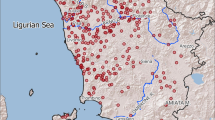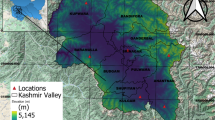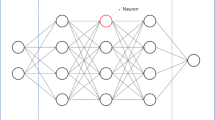Abstract
Precipitation plays an important role in various applications like agriculture, health care, disaster management, forest health and others. These applications are directly or indirectly affected by precipitation. In order to predict precipitation, it becomes important to analyze the pattern followed by the event. The generated pattern should be accurate to obtain the prediction at par. Presence of outliers in any data significantly affects the generated pattern, time required and accuracy in prediction. Treating missing values is not sufficient to get higher accuracy in prediction. In this paper, we present the performance evaluation of Support vector regression (SVR), Seasonal auto regressive integrated moving average (SARIMA), and Bi-directional LSTM (Bi-LSTM) for prediction of hydro estimator values (HEM), in domain of machine learning, statistical and deep learning approaches respectively. We have made a comparison between the generated pattern and prediction with and without outliers. We have identified a suitable outlier detection technique by comparing the performance of Cluster Based Local Outlier Factor (CBLOF), Histogram based outlier Detection (HBOS), K nearest neighbour (KNN), Isolation Forest for detecting outliers. The performance on prediction techniques are compared using RMSE and MAE measures. The implementation is done over a big data architecture, since the data is, Big data’.
Access this chapter
Tax calculation will be finalised at checkout
Purchases are for personal use only
Similar content being viewed by others
References
The mouse tumor biology database, https://www.osgeo.org/projects/geoserver
Cai, L., Zhou, S., Yan, X., Yuan, R.: A stacked BILSTM neural network based on coattention mechanism for question answering. Comput. Intell. Neurosci. 1–12 (2019). https://doi.org/10.1155/2019/9543490
Chen, P., Niu, A., Liu, D., Jiang, W., Ma, B.: Time series forecasting of temperatures using SARIMA: an example from nanjing. In: IOP Conference Series: Materials Science and Engineering, vol. 394, 052024p (August 2018). https://doi.org/10.1088/1757-899X/394/5/052024
Drucker, H., Burges, C.J.C., Kaufman, L., Smola, A., Vapnik, V.: Support vector regression machines. In: Proceedings of the 9th International Conference on Neural Information Processing Systems, pp. 155–161. NIPS 1996, MIT Press, Cambridge, MA, USA (1996)
ESA: Newcomers EO guide (newcomers-earth-observation-guide). https://business.esa.int, Accessed 20 Mar 2022
Geetha, A., Nasira, G.M.: Data mining for meteorological applications: decision trees for modeling rainfall prediction. In: 2014 IEEE International Conference on Computational Intelligence and Computing Research, pp. 1–4 (2014). https://doi.org/10.1109/ICCIC.2014.7238481
Gopalani, S., Arora, R.: Comparing apache spark and map reduce with performance analysis using k-means. Int. J. Comput. Appl. 113, 8–11 (2015). https://doi.org/10.5120/19788-0531
Guo, H., Wang, L., Liang, D.: Big earth data from space: a new engine for earth science. Sci. Bull. 61(7), 505–513 (2016). https://doi.org/10.1007/s11434-016-1041-y
Kumar, S., Singh, M.: A novel clustering technique for efficient clustering of big data in Hadoop ecosystem. Big Data Min. Anal. 2(4), 240–247 (2019). https://doi.org/10.26599/BDMA.2018.9020037
M. Swapnaa, N.S.: A hybrid model for rainfall prediction using both parametrized and time series models. Int. J. Pure Appl. Math. 119(14), 1549–1556 (2018)
Nair, A., Ajith Joseph, K., Nair, K.: Spatio-temporal analysis of rainfall trends over a maritime state (Kerala) of India during the last 100 years. Atmospheric Environment 88, 123–132 (2014). https://doi.org/10.1016/j.atmosenv.2014.01.061, https://www.sciencedirect.com/science/article/pii/S1352231014000867
Nikam, V.B., Meshram, B.: Modeling rainfall prediction using data mining method: A Bayesian approach. In: 2013 Fifth International Conference on Computational Intelligence, Modelling and Simulation, pp. 132–136 (2013). https://doi.org/10.1109/CIMSim.2013.29
Patel, M., Patel, A., Ghosh, R.: Precipitation nowcasting: Leveraging bidirectional LSTM and 1d CNN. CoRR abs/1810.10485 (2018), http://arxiv.org/abs/1810.10485
Rao, P., Sachdev, R., Pradhan, T.: A hybrid approach to rainfall classification and prediction for crop sustainability. In: Thampi, S.M., Bandyopadhyay, S., Krishnan, S., Li, K.C., Mosin, S., Ma, M. (eds.) Advances in Signal Processing and Intelligent Recognition Systems, pp. 457–471. Springer, Cham (2016)
Shi, J., Jain, M., Narasimhan, G.: Time series forecasting (TSF) using various deep learning models (2022). https://doi.org/10.48550/ARXIV.2204.11115, https://arxiv.org/abs/2204.11115
Sinnott, R.O., Morandini, L., Wu, S.: Smash: a cloud-based architecture for big data processing and visualization of traffic data. In: 2015 IEEE International Conference on Data Science and Data Intensive Systems, pp. 53–60 (2015). https://doi.org/10.1109/DSDIS.2015.35
Sisodiya Neha, Dube Nitant, T.P.: Next-Generation Artificial Intelligence Techniques for Satellite Data Processing, pp. 235–254 (January 2020). https://doi.org/10.1007/978-3-030-24178-11
Urmay, S., Sanjay, G., Neha, S., Nitant, D., Shashikant, S.: Rainfall Prediction: Accuracy Enhancement Using Machine Learning And Forecasting Techniques, pp. 776–782 (December 2018). https://doi.org/10.1109/PDGC.2018.8745763
Zainudin, S., Jasim, D., Abu Bakar, A.: Comparative analysis of data mining techniques for Malaysian rainfall prediction. Int. J. Adv. Sci. Eng. Inf. Technol. 6, 1148 (2016). https://doi.org/10.18517/ijaseit.6.6.1487
Author information
Authors and Affiliations
Corresponding author
Editor information
Editors and Affiliations
Rights and permissions
Copyright information
© 2023 The Author(s), under exclusive license to Springer Nature Switzerland AG
About this paper
Cite this paper
Sisodiya, N., Vyas, K., Dube, N., Thakkar, P. (2023). Analyzing Hydro-Estimator INSAT-3D Time Series with Outlier Detection. In: Gupta, D., Bhurchandi, K., Murala, S., Raman, B., Kumar, S. (eds) Computer Vision and Image Processing. CVIP 2022. Communications in Computer and Information Science, vol 1776. Springer, Cham. https://doi.org/10.1007/978-3-031-31407-0_37
Download citation
DOI: https://doi.org/10.1007/978-3-031-31407-0_37
Published:
Publisher Name: Springer, Cham
Print ISBN: 978-3-031-31406-3
Online ISBN: 978-3-031-31407-0
eBook Packages: Computer ScienceComputer Science (R0)




